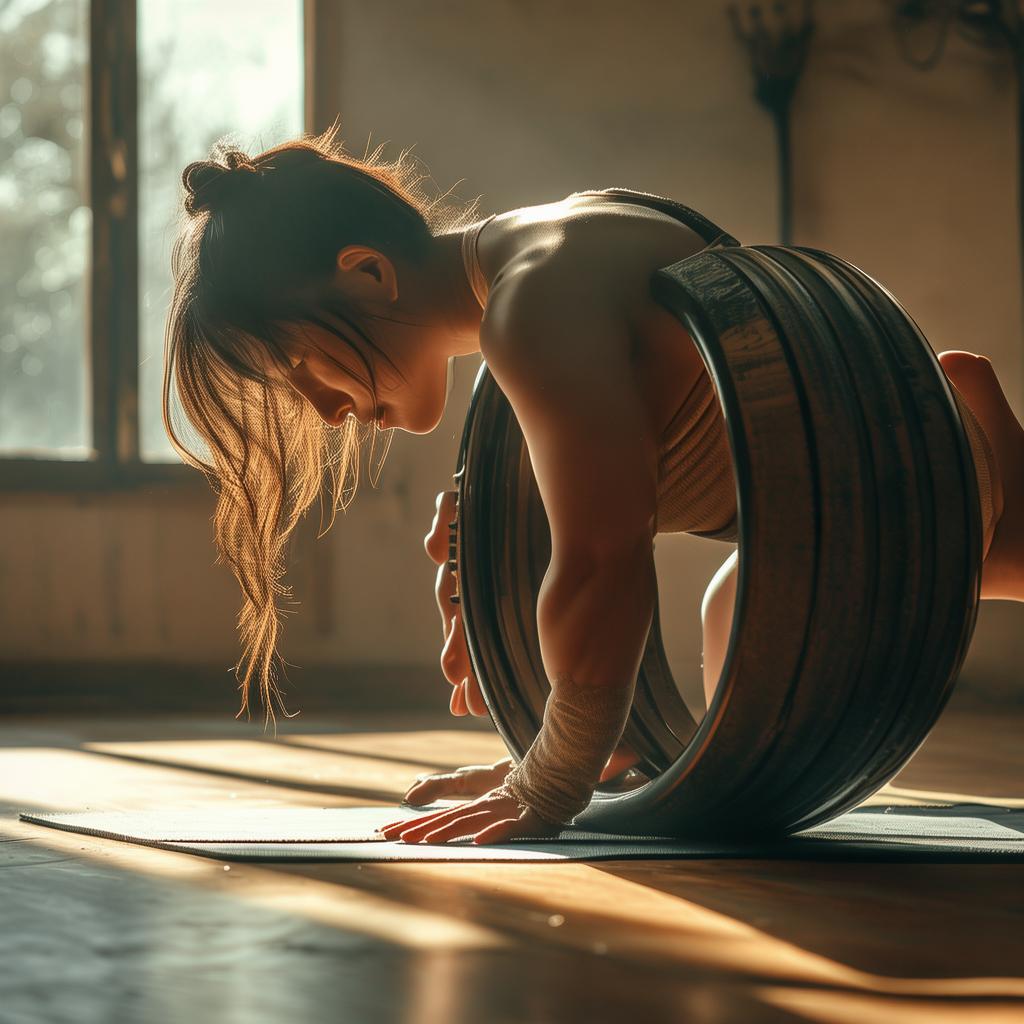Why Focus on Back Training?
If you could only train one area twice a week with limited options, many high – achievers would choose the back. When debating between chest and back training, back training is often a wiser choice. Every bit of progress in the back is significant. A wide back is quite impressive, and it’s not just about pull – ups and barbell rowing; rope exercises can also greatly enhance back development.
Back Training Principles
To build a stronger back, it’s essential to stimulate both primary and secondary muscles. This requires combining various back – training movements that target the upper and lower back muscles, such as the latissimus dorsi, upper and middle back, lower back, and all the secondary muscles in between. Incorporating rope equipment into back training can increase strength and muscle mass, and it also provides better results for major fitness movements like hard pulls or bench presses.
10 Effective Rope Exercises for Back Training
1. Straight Arm Pulldowns
This is an excellent rope movement to isolate and train the latissimus dorsi. Hold a straight bar at the top with hands shoulder – width apart and pull it down towards your thighs. Keep your core tight throughout and focus on the latissimus dorsi. For first – time practitioners, start with a lighter weight to avoid arm flexion and engage the correct target muscles before increasing the load.
2. Rope Face Pull
The rope face pull is great for training the posterior deltoid, rhomboids, and rotator cuff muscle groups. Attach the rope to a pulley at eye level, pull the rope straight towards your face with elbows up and out to the sides. As you pull back, separate your hands until your elbows are slightly back and your hands are on either side of your head. It’s suitable for both shoulder and upper back training and should be done slowly and with control.
3. Narrow Grip High Pull – Downs
This is an effective compound movement that stimulates the upper latissimus dorsi and increases overall back strength. Sit with your legs under the mat, grip narrowly (as wide as or a little narrower than your shoulders), tighten your core, keep your chest up, and engage the latissimus dorsi when pulling the bar down against your pecs. Slowly return the bar to the starting position while maintaining tension.
4. Wide Grip High Pull – Downs
High pulldowns with a wide grip are among the most effective back exercises, mainly training the upper back muscles. They target the latissimus dorsi and secondary muscles like the rhomboids and deltoids. Do this movement with correct posture, slowly and in a controlled manner. Keep your hips in the seat, chest raised, and elbows squeezed down towards the tailbone. Avoid pulling the bar behind the neck as it can harm the rotator cuff muscle groups.
5. V – Handle High Pull – Downs
The v – handle high pull – down effectively stimulates the latissimus dorsi while training the lower and middle trapezius and rhomboids. Unlike forward and reverse grip high pull – downs, it uses a v – bar with hands facing each other. Lean back slightly, sit with knees fixed under the mat, contract your shoulder blades to bring the bar towards your chest, keep elbows tucked in, and focus on squeezing the latissimus dorsi.
6. Reverse Grip High Pull – Downs
The reverse grip latissimus dorsi pull – down brings the elbows closer to the body, focusing more on the lower latissimus dorsi. It’s similar to the narrow grip high pull – down but with the grip changing from palm out to palm facing you. Keep shoulder blades tight and avoid using borrowed strength to pull the bar.
7. Seated Rope Rowing
Seated rope rowing is a popular back rope movement that mainly trains the latissimus dorsi, middle back, and oblique muscles, with some secondary muscles like the posterior deltoid and biceps also involved. It can replace or supplement the dumbbell row and barbell dip row. Tighten the scapulae backwards in each row to maintain a strict movement position.
8. One – Arm Seated Rope Row
This is a variation of the seated rope row that works one side at a time. It allows for a greater range of motion, maximises back muscle contraction, and increases trunk rotation while training the core. Keep shoulders tucked back when doing a one – arm rope row, rotate wrists as you pull backwards, and keep elbows close to the body when releasing the rope. It’s a good way to balance strength if one side of your body has stronger muscle strength.
9. Wide Grip Seated Rope Row
The wide grip row trains more of the upper back muscles, including the rhomboids and posterior deltoids. It’s great for upper back thickness training and can help correct body posture issues, especially for those who do a lot of bench pressing. Sit, grab a straight bar with a grip a little wider than shoulder width, lift your chest, sink your shoulders, and arch your back slightly. Pull the bar towards your chest slowly and fluidly, squeezing and contracting muscles before returning the weight to the starting position.
10. Rope Reverse Flying Bird
This is a great finishing move that highly concentrates on the rhomboids and posterior deltoids. Start with light weights until you’re comfortable with the movement. Stand facing the gantry with pulleys at shoulder height, grab the ropes, cross them in front of you, step back, and let the ropes pull tight to the sides. Keep upper arms at shoulder – height on a horizontal plane and maintain a slightly bent elbow position.
Back Rope Training Programme
Here is a sample back rope training programme:
| Training Movement | No. Of Sets | No. Of Reps |
|---|---|---|
| Wide Grip High Pull – Down | 4 | 8 – 10 |
| Reverse Grip High Pull – Down | 4 | 8 – 10 |
| Straight Arm Pull – Down | 5 | 12 – 15 |
| Rope Face Pull | 4 | 15 |
| Seated Single Arm Rope Row | 5 | 10 – 12 |
Some tips:
– For maximum upper – back stimulation, form a superset of wide grip high pulldowns and reverse grip high pulldowns.
– Concentrate on mobilising the latissimus dorsi in straight arm pull – downs, not the arms.
– Keep the weight light in rope face pulls until comfortable and maintain a slow, controlled movement.
– Seated single arm rope rows can be done sitting or standing, with an emphasis on the centrifugal phase of the movement.
Conclusion
The back is one of the largest support systems for the body’s skeleton. Stimulating the larger back muscles can build strength, increase dimension, and burn calories. Most back workouts include standard exercises like hard pulls, pull – ups, and rows. By adding these rope exercises to your routine, you can achieve a stronger, more developed physique, strengthening both primary and secondary muscles as well as stability muscles. Whether you’re an experienced trainee or a beginner, back training takes time. Try adding these rope moves to make it more enjoyable and start your second back workout of the week!





